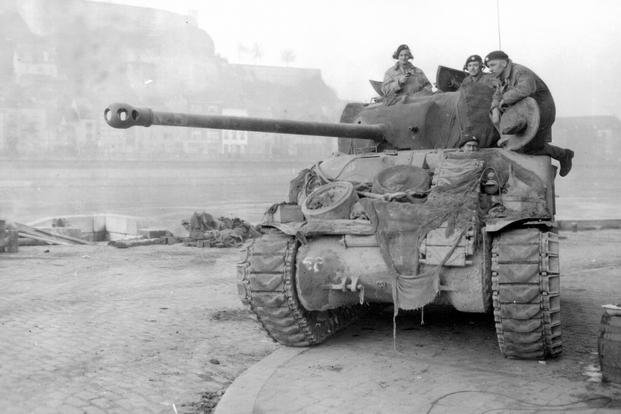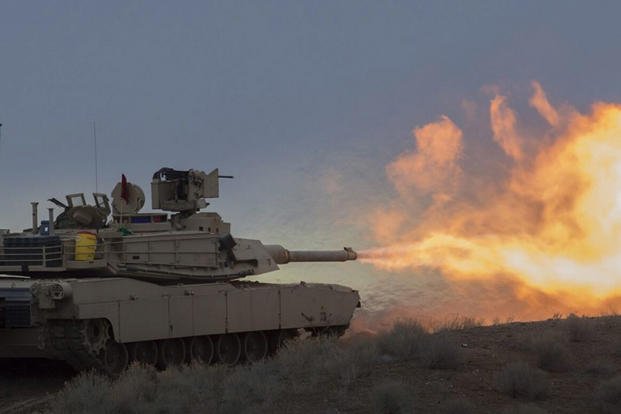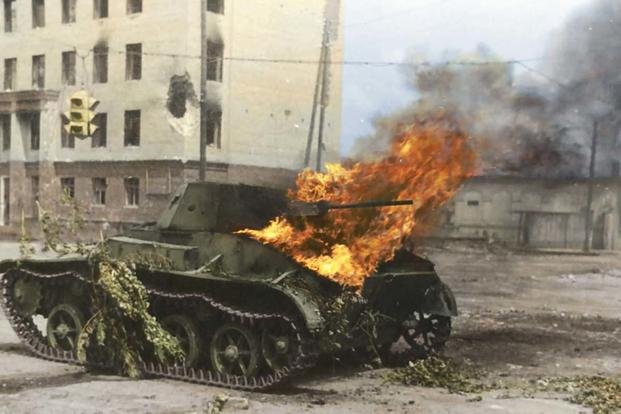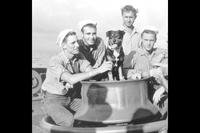The United States didn't always have the edge when it came to the latest weapons. That changed when the British Army designed a tank round that didn't need to penetrate a tank's armor to cripple the vehicle.
During World War II, the United States and its allies fielded a number of tanks of varying quality. They weren't always the best, but they got the job done.
The M4 Sherman tank was built for nearly every Allied nation and eventually helped topple the Third Reich. Before that happened, however, American troops had a lot to fear from German tanks. Chief among them was the Tiger tank.

Nazi Germany's Tiger tanks could penetrate the armor of any Allied tank. It's estimated that Tiger tanks took out 11 Allied tanks for every Tiger knocked out. One Tiger was enough to wreak havoc on Allied shipping, destroy bases and kill dozens of tanks, all because the Allies couldn't easily penetrate its armor.
British planners decided that not being able to get through enemy armor wasn't going to stop them. That's how the HESH round came to be.
"HESH" stands for "high-explosive squash head." Its name is surprisingly indicative of how it works. The HESH round doesn't penetrate a tank's armor like a modern Sabot round. Instead, the HESH is a small, high-explosive round that smashes against an enemy tank then explodes, creating a shock wave that is transmitted through the tank's armor, killing the crew inside.
Originally a British design, the HESH round did see action in World War II, just not against other tanks. In the Cold War that came after, however, its popularity rose.
This new anti-tank weapon could be used in the form of a tank round or in guided-missile systems used by the UK's tanks. It was especially effective against the T-62 tanks that rolled out of Soviet factories in the 20 years after World War II. The shock wave created by HESH rounds was especially conductive through the armor of early Cold War Soviet tanks.
The round's popularity declined in the later years of the Cold War as Soviet armor improved.
HESH rounds are still in use by some militaries around the world, including the U.S. Army. It isn't used to bust tank crews anymore, however -- the U.S. military found better ways to handle that. Instead, HESH rounds are used against concrete bunkers and other fortified positions.

Later developments in anti-tank rounds included the use of dense metals such as tungsten or depleted uranium to pierce through tank armor, like the penetrator used in a Sabot round. Sabot rounds have been known to penetrate multiple tanks, igniting the air inside.
The penetrators themselves will often fly around the inside of the tank, creating a shotgun blast effect at a much higher velocity. But the danger doesn't end there. Even if a penetrator round doesn't penetrate the tank's armor, steel from inside the tank could separate from the surface and fly through the crewmen inside, an effect known as "spalling."
-- Blake Stilwell can be reached at blake.stilwell@monster.com.
Want to Know More About Military History?
Be sure to get the latest stories about Military History, as well as critical info about how to join the military and all the benefits of service. Subscribe to Military.com and receive customized updates delivered straight to your inbox.
















